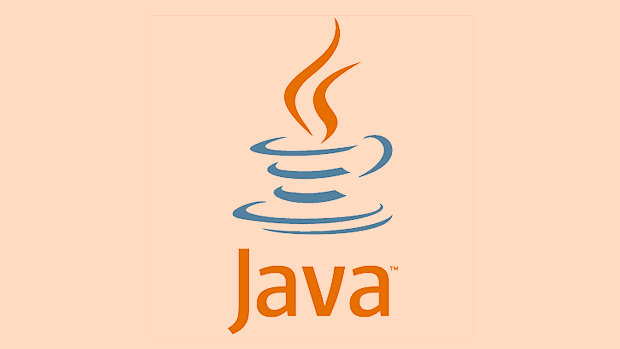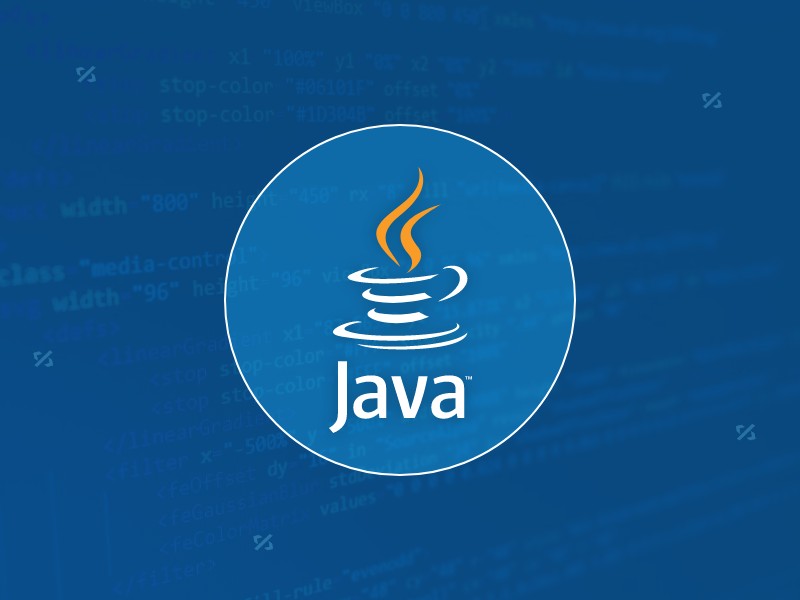Explain the concept of autoboxing and unboxing in Java.
Jul 09, 2025 am 01:52 AMAutoboxing and unboxing in Java enable automatic conversion between primitives and their wrapper classes. Autoboxing converts primitives to wrapper objects, such as when adding an int to an Integer list, while unboxing extracts the primitive from a wrapper, like assigning an Integer to an int. Common autoboxing use cases include adding primitives to collections, returning primitives from methods expecting wrappers, and passing primitives where wrappers are required. Unboxing typically occurs during assignment, arithmetic operations, and method calls expecting primitives. Potential issues include NullPointerException when unboxing null, performance overhead due to object creation, and unexpected results when comparing wrapper objects with ==. Understanding these mechanisms helps avoid bugs and optimize performance.

Autoboxing and unboxing in Java are features that allow automatic conversion between primitive types (like int, double) and their corresponding wrapper classes (like Integer, Double). These features were introduced in Java 5 to make code more readable and reduce boilerplate.

What is Autoboxing?
Autoboxing is the automatic conversion that the Java compiler makes from a primitive type to its corresponding wrapper class. This happens when you assign a primitive value to a variable of a wrapper class or pass it where an object is expected.

For example:
List<Integer> numbers = new ArrayList<>(); numbers.add(10); // autoboxing: int -> Integer
In this case, you're adding a primitive int into a list that holds Integer objects. The compiler automatically wraps the int into an Integer.

Common use cases:
- Adding primitives to collections like
ArrayList,HashMap - Returning primitives from methods that declare return types as wrapper classes
- Passing primitives into methods that expect wrapper objects
This helps avoid manually wrapping values with new Integer(10) or similar, which was common before Java 5.
What is Unboxing?
Unboxing is the reverse of autoboxing — it's the automatic conversion from a wrapper class back to a primitive type.
Here’s an example:
Integer obj = 10; int value = obj; // unboxing: Integer -> int
You're taking an Integer object and assigning it directly to an int. The compiler handles the extraction of the primitive value behind the scenes.
Where does unboxing happen?
- Assigning wrapper objects to primitive variables
- Using wrapper objects in arithmetic expressions
- Passing wrapper objects to methods expecting primitives
It simplifies working with wrapper objects when you actually need the underlying primitive value.
Potential Pitfalls to Watch For
While autoboxing and unboxing are convenient, they can lead to subtle bugs or performance issues if not used carefully.
NullPointerException: If you try to unbox a null reference, you'll get a runtime error.
Integer val = null; int x = val; // throws NullPointerException
Performance overhead: Frequent boxing/unboxing can create unnecessary objects, especially in loops or large data sets.
Equality confusion: Comparing wrapper objects with
==may not work as expected due to caching behavior for small integers.Integer a = 127; Integer b = 127; System.out.println(a == b); // true (due to cache) Integer c = 128; Integer d = 128; System.out.println(c == d); // false
So while these features simplify code, always be aware of what’s happening under the hood.
These conversions are handy but easy to overlook. Basically, Java hides the object creation and value extraction steps so you don’t have to write them manually — but that also means you should understand how and when it's happening.
The above is the detailed content of Explain the concept of autoboxing and unboxing in Java.. For more information, please follow other related articles on the PHP Chinese website!

Hot AI Tools

Undress AI Tool
Undress images for free

Undresser.AI Undress
AI-powered app for creating realistic nude photos

AI Clothes Remover
Online AI tool for removing clothes from photos.

Clothoff.io
AI clothes remover

Video Face Swap
Swap faces in any video effortlessly with our completely free AI face swap tool!

Hot Article

Hot Tools

Notepad++7.3.1
Easy-to-use and free code editor

SublimeText3 Chinese version
Chinese version, very easy to use

Zend Studio 13.0.1
Powerful PHP integrated development environment

Dreamweaver CS6
Visual web development tools

SublimeText3 Mac version
God-level code editing software (SublimeText3)

Hot Topics
 Applying Semantic Structure with article, section, and aside in HTML
Jul 05, 2025 am 02:03 AM
Applying Semantic Structure with article, section, and aside in HTML
Jul 05, 2025 am 02:03 AM
The rational use of semantic tags in HTML can improve page structure clarity, accessibility and SEO effects. 1. Used for independent content blocks, such as blog posts or comments, it must be self-contained; 2. Used for classification related content, usually including titles, and is suitable for different modules of the page; 3. Used for auxiliary information related to the main content but not core, such as sidebar recommendations or author profiles. In actual development, labels should be combined and other, avoid excessive nesting, keep the structure simple, and verify the rationality of the structure through developer tools.
 The requested operation requires elevation Windows
Jul 04, 2025 am 02:58 AM
The requested operation requires elevation Windows
Jul 04, 2025 am 02:58 AM
When you encounter the prompt "This operation requires escalation of permissions", it means that you need administrator permissions to continue. Solutions include: 1. Right-click the "Run as Administrator" program or set the shortcut to always run as an administrator; 2. Check whether the current account is an administrator account, if not, switch or request administrator assistance; 3. Use administrator permissions to open a command prompt or PowerShell to execute relevant commands; 4. Bypass the restrictions by obtaining file ownership or modifying the registry when necessary, but such operations need to be cautious and fully understand the risks. Confirm permission identity and try the above methods usually solve the problem.
 Differences Between Callable and Runnable in Java
Jul 04, 2025 am 02:50 AM
Differences Between Callable and Runnable in Java
Jul 04, 2025 am 02:50 AM
There are three main differences between Callable and Runnable in Java. First, the callable method can return the result, suitable for tasks that need to return values, such as Callable; while the run() method of Runnable has no return value, suitable for tasks that do not need to return, such as logging. Second, Callable allows to throw checked exceptions to facilitate error transmission; while Runnable must handle exceptions internally. Third, Runnable can be directly passed to Thread or ExecutorService, while Callable can only be submitted to ExecutorService and returns the Future object to
 Exploring Different Synchronization Mechanisms in Java
Jul 04, 2025 am 02:53 AM
Exploring Different Synchronization Mechanisms in Java
Jul 04, 2025 am 02:53 AM
Javaprovidesmultiplesynchronizationtoolsforthreadsafety.1.synchronizedblocksensuremutualexclusionbylockingmethodsorspecificcodesections.2.ReentrantLockoffersadvancedcontrol,includingtryLockandfairnesspolicies.3.Conditionvariablesallowthreadstowaitfor
 How Java ClassLoaders Work Internally
Jul 06, 2025 am 02:53 AM
How Java ClassLoaders Work Internally
Jul 06, 2025 am 02:53 AM
Java's class loading mechanism is implemented through ClassLoader, and its core workflow is divided into three stages: loading, linking and initialization. During the loading phase, ClassLoader dynamically reads the bytecode of the class and creates Class objects; links include verifying the correctness of the class, allocating memory to static variables, and parsing symbol references; initialization performs static code blocks and static variable assignments. Class loading adopts the parent delegation model, and prioritizes the parent class loader to find classes, and try Bootstrap, Extension, and ApplicationClassLoader in turn to ensure that the core class library is safe and avoids duplicate loading. Developers can customize ClassLoader, such as URLClassL
 Handling Common Java Exceptions Effectively
Jul 05, 2025 am 02:35 AM
Handling Common Java Exceptions Effectively
Jul 05, 2025 am 02:35 AM
The key to Java exception handling is to distinguish between checked and unchecked exceptions and use try-catch, finally and logging reasonably. 1. Checked exceptions such as IOException need to be forced to handle, which is suitable for expected external problems; 2. Unchecked exceptions such as NullPointerException are usually caused by program logic errors and are runtime errors; 3. When catching exceptions, they should be specific and clear to avoid general capture of Exception; 4. It is recommended to use try-with-resources to automatically close resources to reduce manual cleaning of code; 5. In exception handling, detailed information should be recorded in combination with log frameworks to facilitate later
 Asynchronous Programming Techniques in Modern Java
Jul 07, 2025 am 02:24 AM
Asynchronous Programming Techniques in Modern Java
Jul 07, 2025 am 02:24 AM
Java supports asynchronous programming including the use of CompletableFuture, responsive streams (such as ProjectReactor), and virtual threads in Java19. 1.CompletableFuture improves code readability and maintenance through chain calls, and supports task orchestration and exception handling; 2. ProjectReactor provides Mono and Flux types to implement responsive programming, with backpressure mechanism and rich operators; 3. Virtual threads reduce concurrency costs, are suitable for I/O-intensive tasks, and are lighter and easier to expand than traditional platform threads. Each method has applicable scenarios, and appropriate tools should be selected according to your needs and mixed models should be avoided to maintain simplicity
 What is the purpose of the `static` keyword in Java?
Jul 05, 2025 am 02:36 AM
What is the purpose of the `static` keyword in Java?
Jul 05, 2025 am 02:36 AM
Static keywords are used in Java to create variables and methods that belong to the class itself, rather than instances of the class. 1. Static variables are shared by instances of all classes and are suitable for storing data shared by all objects, such as schoolName in the Student class. 2. Static methods belong to classes and do not depend on objects. They are often used in tool functions, such as Math.sqrt(), and can only access other static members. 3. Static code blocks are used to perform initialization operations when class loading, such as loading libraries or setting logs. 4. Static inner classes can be instantiated independently of the external class, but non-static members of the external class cannot be accessed. Rational use of static can effectively manage class-level resources and behaviors.






